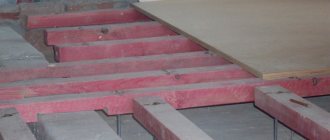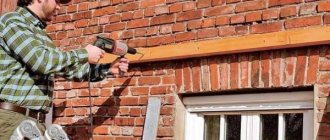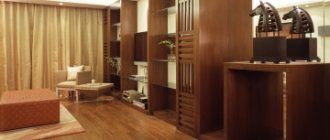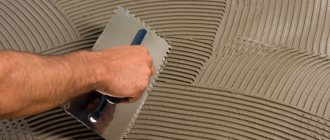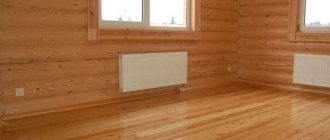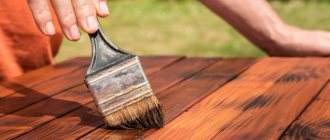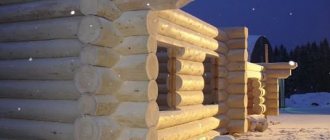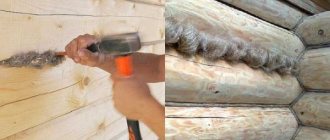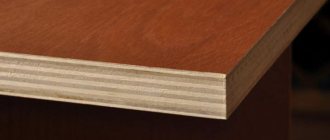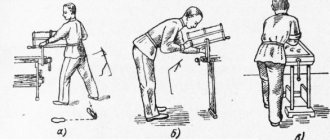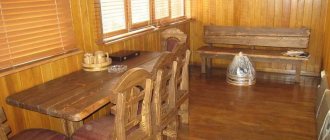The main enemies of a wooden floor are moisture and various kinds of bacteria and microorganisms. Under the influence of these factors, the construction material begins to rot, loses its original aesthetic properties and serves much less than it should.
How to cover a wooden floor
To prevent the occurrence of these problems, the wooden floor must be coated with a special protective compound. The modern market offers a large selection of products that not only help to increase the durability and other important performance indicators of wood, but also make its appearance more noble and attractive.
After reading the information below, you will get a complete understanding of the features of the selection and use of existing compositions, which will allow you to independently cope with this event.
Available types of wood treatment compounds
Reliable and effective protection of wooden structures from harmful external influences can be ensured using the following compounds:
- wood varnish;
Polyurethane varnish Pallmann IS 90 Sport for wooden floors
- wax products;
- oil based coatings.
Each option mentioned will give the wooden floor an attractive appearance, while at the same time ensuring increased resistance of the material to various types of influences and loads and helping to extend its service life.
Hard wax oil for wooden floors Saicos
Next, you are invited to familiarize yourself with a description of the basic properties of varnish, wax and oil, as well as study the technology for applying each of these materials. But first you should definitely understand the procedure for preparing the surface for subsequent processing.
Oil-wax
General Tips
Beams are supporting elements for the construction of a floor or ceiling; they must withstand maximum design loads and have a safety margin. Depending on the purpose and operating conditions of the premises, the thickness of the beams and the distance between them are selected. The materials can be used beams with dimensions of 50×50 mm or more or boards with parameters from 50×150 mm. On lumber with smooth surfaces, the subfloor can be attached from the bottom, side or top; on round beams - only from the bottom or top.
Characteristics of wood used for floor joists
Table. What elements does a classic subfloor consist of?
| Item name | Purpose and description |
| Beams or joists | The main load-bearing element absorbs all static and dynamic forces. In each individual case, individual calculations are made based on linear parameters and distance steps. They can rest on columns, foundation strip, floor slab, facade walls or load-bearing interior partitions. |
| Skull bars | Size - approximately 20x30 mm, fixed to the side surfaces of the beams, used for laying subfloor boards. |
| Hydro- or vapor barrier | The waterproofing is laid on the subfloor, which serves as the foundation for the finishing floor. Vapor barrier is used to protect insulation from increased relative humidity; it is used on the first floors or ceilings. |
Depending on the specific placement and purpose of the subfloors, the listed elements may be added or excluded. We'll look at a few of the most commonly used types of subfloors.
Floor beams
Instructions for preparing a wooden floor for coating
The procedure depends on whether you are working with a new floor or a previously used structure.
Guide for a new floor
First of all, check the condition of the fasteners that secure the deck boards. The heads of screws and nails need to be “sunk” into the material by about 2-3 mm. Next, the remaining recesses are covered with a sealing agent. Instead, you can use a special putty designed for wood processing. It is important that the color of the material matches the color of the boards as much as possible.
Drive in the nail heads and apply putty.
Cover the deck with starter varnish and let it dry. The drying time is determined by the moisture content of the boards. If the material humidity is more than 12%, the varnish will dry for a very long time - up to several months. If the boards have been well dried, the waiting period will be reduced to 2-3 weeks.
Apply varnish to the floor
Guide for old floor
If the existing deck boards are in good condition and do not require replacement, preparation begins by removing the existing paint or other coating. If you find defective boards, be sure to replace them before starting work.
Old paint should be removed
The paint can be easily removed using a sanding machine. But it is not advisable to buy this unit for single use. If your place of residence does not provide such tools for rent, use the old and proven manual method.
Prepare the following:
- iron (preferably one that you don’t mind);
- paper. Take it with a reserve, it will take a lot;
- special paint remover;
- electric plane;
- grinder with an attachment for sanding wooden surfaces;
- several spatulas;
- sandpaper. Practice shows that it is most convenient to work with material having a grain size of 150-180.
Proceed to remove the old paintwork. Place paper on the base and place a well-heated iron on top of it. As a result of this treatment, the paint will come off the floor and stick to the sheet. Remove the remaining areas of the coating with a spatula and knife. If paint has become embedded in the floor material, apply a stripper according to the manufacturer's instructions.
Video - Removing old paint from the floor
Remove the thin top layer of material from the cleaned boards. An electric plane will help you with this. Make sure that the fastener heads do not protrude above the boards.
Electric planer
Important! The work is quite dusty, so for your own safety, wear a respirator and safety glasses.
Sand the surface using a grinder with the previously mentioned attachment and sandpaper. Collect the dust, but do not throw it away - it may be useful to you in the future.
Sanding a wooden floor
Fill cracks and other flooring defects. If you do not have a special primer of a suitable color, use a mixture of PVA glue and wood dust. Add dust until the desired color is obtained. If you use the second option, be careful and attentive: any excess glue that appears must be immediately removed from the surface. This is easily done with a damp cloth.
For putty, mix sawdust and PVA glue
Finally, all you have to do is apply a starter varnish to the floor and let it dry. The recommendations are similar to the previous case.
Reasons for the appearance of parasites in a tree
The most common parasitic insects on wood are the wood-boring beetle, bark beetle and shawl.
Bark beetle - the name of the insect speaks for itself: it feeds on tree bark. If during construction a material with the presence of bark (joists, support beams) is used, pests can settle in it.
Adults are not dangerous to wood - they feed only on bark, turning it into dust. Insect larvae parasitize, eating holes in the sapwood of wood, which affects its strength.
The presence of wood-boring beetle larvae in a plank floor is indicated by creaking floorboards. The pest requires urgent action, since the larvae are capable of turning any wood into dust in a short time.
The woodworm also causes enormous harm. Its peculiarity is omnivorousness. Sometimes it is possible to get rid of it only by burning the damaged wood.
Infection of trees with parasites occurs in nature. And an important condition for their existence is the presence of moisture: insects and their larvae do not live in dry material.
When purchasing building materials, you need to pay attention to the presence of passages formed by the larvae.
Modern methods of drying blanks in high-temperature ovens make it possible to ideally protect wood from pest damage.
Varnishing the floor
Varnishing the floor
Types of material
There is a fairly wide range of varnishes on the market. Before you start, be sure to familiarize yourself with the features of the most popular representatives of this category.
Table. Properties of different wood varnishes
| Type of varnish | Characteristics |
| Water soluble | Advantages: dries quickly; adheres well to the base; doesn't stink. One- and two-component modifications are available for sale. The first ones usually last no more than 2-3 years - after this time the floor will have to be sanded and treated again. If you apply a two-component varnish in 3 layers, it will last about 10 years even in rather harsh operating conditions. But such material also costs much more. |
| Alkyd | The advantage is that the structure of the treated wood becomes more pronounced and beautiful. Disadvantage: long drying time. The varnish is excellent for covering the so-called. "floating" floor. To prevent the varnish from wrinkling, experts recommend limiting its consumption to a maximum of 120 g/m2. It is important that during the drying process the varnish is not exposed to heat from radiators and other heating devices. Contact with direct sunlight is also prohibited. |
| Anhydrous polyurethane | The main advantage is excellent wear resistance. Also, such varnishes tolerate contact with water and various chemical detergents well. Important! The moisture content of wood coated with such a product should be no more than 10%. Otherwise the coating will bubble. |
| Acid curing | Characterized by the greatest strength. Resistant to a wide variety of influences. Natural light shades are created on the floor material. You just need to follow the basic recommendations for using the product, namely: the varnish is mixed with the hardener strictly before using the mixture; the performer must wear personal protective equipment - a respirator; There must be a constant flow of air in the room. Violation of these recommendations may result in irritation of the mucous membranes for the performer. |
Antiseptics – protection against microorganisms
Antiseptics prevent the destructive effects of insects, fungi, viruses, putrefactive agents and other pests on wood. Often, antiseptics for outdoor use contain substances that protect the wooden surface from ultraviolet radiation and precipitation. It is important to pay attention to this when choosing an antiseptic for the flooring of a veranda or terrace.
Many modern antiseptics have water-repellent properties. This eliminates the possibility of warping, cracking and twisting of wooden floor elements during prolonged exposure to moisture.
Antiseptics can be prophylactic or therapeutic.
Prophylactic compositions represent the bulk of antiseptics. They treat undamaged wood for its subsequent protection during operation. A popular representative of such antiseptics is Neomid 400, which forms a colorless film on a wooden surface that prevents insects and bacteria from entering the tissue.
Therapeutic antiseptics contain more aggressive components that not only repel, but also destroy tree pests. These products are used on wooden surfaces that have already been damaged. Or where there are difficult operating conditions. For example, on wooden floors in bathhouses, where high humidity initially increases the risk of rotting. Here, medicinal antiseptics, to be on the safe side, are often used as preventatives.
The medicinal composition Neomid 100 Anti-bug has proven itself to be excellent, having a detrimental effect on bark beetles, shawls and other insect pests. The antiseptic Wood Healer DL-2 has a similar effect.
Procedure for applying varnish
Various tools are used to apply varnish. So, for example, quick-drying water-soluble compounds are applied with rollers of the highest quality. The performer must distribute the material over the surface using exclusively translational movements. First, the product is applied across the flooring, after which it is leveled in the longitudinal direction, i.e. the surface is varnished “crosswise”.
Procedure for applying varnish
You can use a spatula to apply the first layer of material. The performer makes fairly quick S-shaped movements, evenly distributing the composition over the base. This technology allows for higher coating strength.
If using a brush, the material should be applied in neat U-shaped strokes. In this case, the new stroke should slightly overlap the previous one.
It is most convenient to start work from the wall opposite to the exit from the room - this way you will not have to walk on the applied composition.
How to deal with rot
If the treatment turned out to be insufficient and the joists begin to rot, you can deal with the problem without completely replacing the floor. You need to start the fight against rot with thorough ventilation. Then you need to remove the floor boards, inspect the joists and find all areas of rot. Each affected area must be treated with one of the following compounds:
- Industrial products against rot and mold or other chlorine-based substances. They are used according to the instructions.
- A solution of a mixture of iron sulfate, potassium alum and table salt . Apply to the affected area with a brush. Completely destroys bacteria and fungi. The treatment must be repeated after a month for maximum results.
- Setting fire to sulfur . In the bathhouse, you need to tightly close the windows and ventilation, and exclude access to pets. Sulfur powder is poured into an iron can, set on fire and quickly left the room. Close the door tightly behind you and leave it overnight. In the morning, the bathhouse is opened, the air is disinfected with a bucket of quicklime, and then ventilated. The method is effective, but fire hazardous.
- Hydrogen peroxide . Copes with mold and inhibits the rotting process. Safe for humans at any temperature. The solution is poured onto the affected areas and around them in a thin stream.
To work you need a large bottle of peroxide Source peroxide-prom.ru
How to coat a wooden floor with oil
How to coat a wooden floor with oil
The oil penetrates the wood structure, protecting the material from the inside and without creating a continuous film on top of it. As a result, the wear resistance of the wooden floor increases significantly. An additional advantage of the oil is its environmental friendliness. As a rule, such coatings do not contain solvents or are present in insignificant quantities.
Solid oil for wooden floors
It is important to know that on a floor covered with oil, material defects will be much more noticeable than if varnish is used. Therefore, the work must be carried out step by step and in strict accordance with the manufacturer’s recommendations. A general requirement that is relevant for all such compositions is the timely removal of excess oil from wood. Otherwise, the floor will be covered with unsightly dark spots.
Oil application
It is impossible to provide specific instructions for covering a wooden floor with oil, because... the procedure is largely determined by the manufacturer's recommendations. We can only describe the general sequence:
- the surface is carefully polished. Small areas can be sanded manually; large areas can be processed more conveniently and quickly using a sanding machine with an appropriate attachment;
- cracks and other defects are sealed with putty;
- the surface is covered with a thin and uniform layer of oil. For application, you can use rollers, spatulas and devices specially designed for such work. This point, as well as other recommendations for applying the product, should be further clarified in the manufacturer’s instructions.
On average, the oil hardens for 12 hours. After this, the material will need to be given another 3-4 days to gain strength.
Wood oil extends the life of the floor
Important! After the first treatment of a wooden floor with oil, the surface will become very dirty. Such marks will stop appearing only after the material is completely saturated, which on average takes several years.
If necessary, such a coating can be restored without much effort: the damaged area is simply sanded and re-impregnated with oil.
Using oil you can reliably protect the floor from moisture
Fire retardants – fire protection
Fire-retardant impregnations protect wood from thermal destruction, that is, from ignition under the influence of heat or fire. The chemicals that make up fire retardants create compounds at high temperatures that prevent ignition or flame spread. Naturally, fire retardants are not a complete fire protection guarantee. They allow wooden surfaces to resist thermal aggression, but only for a short time (about 10-15 minutes when heated to 700˚C).
Fire retardants are recommended to be used to protect wooden floors in rooms where there is a source of ignition - a stove, fireplace, etc.
Based on their mode of action, fire-prevention impregnations are divided into 2 groups. The first includes fire retardants that prevent combustion. The second - blocking the spread of fire.
Fire retardants, which prevent combustion, begin to release non-flammable gases when the temperature rises. They push air away from the surface of the wood and thereby make combustion impossible.
Blocking flame retardants form a special film on the surface of the wood. When exposed to fire, this film swells and blocks the access of oxygen (necessary for combustion) to the protected surface.
Paints, primers, varnishes, plasters, etc. can be applied over fire retardants. Fire-fighting impregnations are often used in tandem with antiseptics. For best results, it is recommended to first apply a layer of antiseptic to the surface, then a fire retardant. For example, you can use the following scheme: the first 2-3 layers are Neomid 400 antiseptic, the next 2-3 layers are Neomid 530 fire protection.
Using wax to coat wood floors
Rubbing oil-wax into wood
The main advantage of wax is its absolute environmental friendliness and safety for human health. Wax can be used both as an independent coating and in combination with the previously discussed oil.
Floors covered with hard wax look as natural as possible.
The technology for applying wax is extremely simple and straightforward:
- an even layer of wax is distributed over the previously prepared surface (recommendations were given earlier);
- The material is given time to dry. This point should be clarified separately in the manufacturer's instructions, because drying time may vary depending on the properties of the specific composition;
- The surface is thoroughly polished using a clean cotton cloth.
Experts recommend renewing the wax coating twice a year. Otherwise, the frequency of such processing remains at the discretion of the owner.
Now you know what can be used to cover a wooden floor and how to handle each material considered.
Good luck!
Services of professional craftsmen
Antiseptic treatment of the internal walls of wooden buildings is an important and responsible job that requires care and precision. Therefore, it is best to entrust it to professionals.
offers its services for interior processing of a wooden house. The work is performed by qualified specialists with extensive experience. We use safe and certified products, which we select individually, taking into account the characteristics and condition of a particular object.
You can send your application or contact us by phone; you will find our contact information in the “Contacts” section.
Calculate the cost of painting and insulating your home right now
